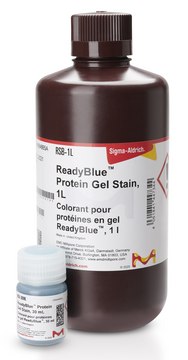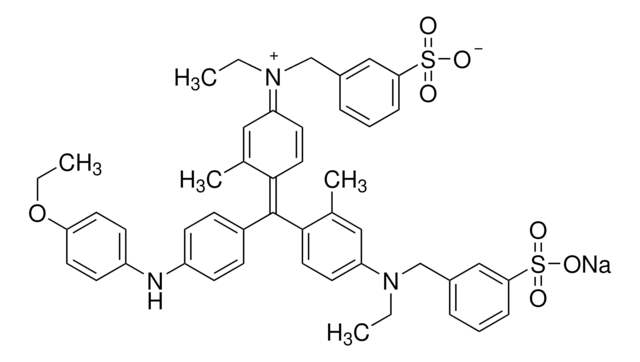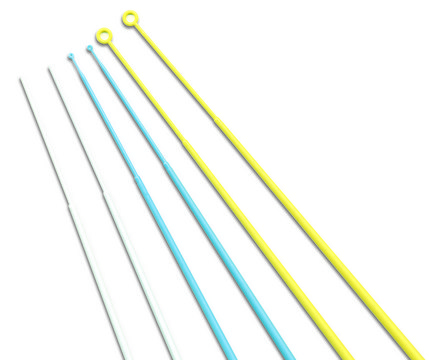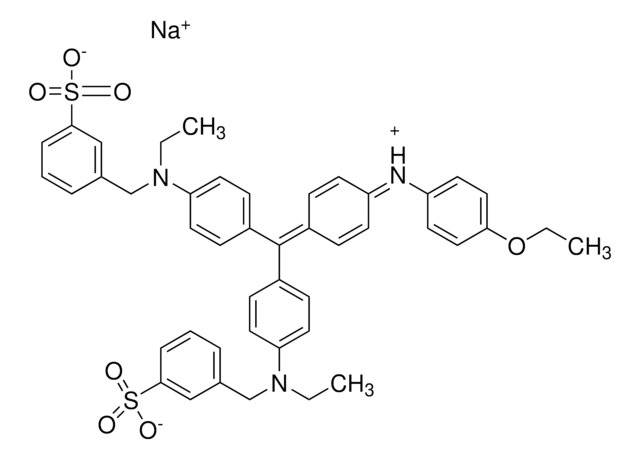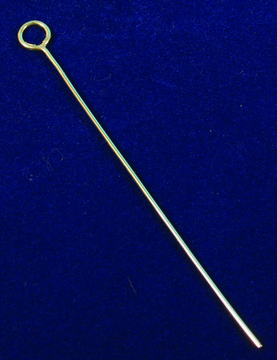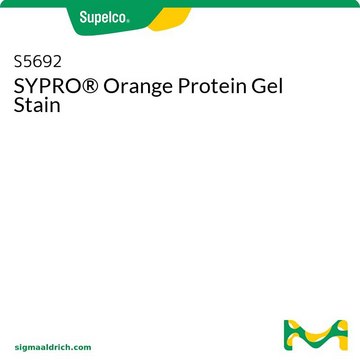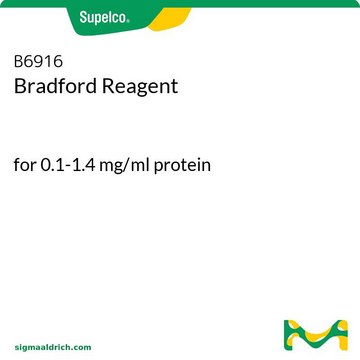ISB1L
InstantBlue™
Ultrafast Protein Stain
Synonym(s):
protein gel stain, protein stain
Sign Into View Organizational & Contract Pricing
All Photos(1)
About This Item
UNSPSC Code:
12352200
NACRES:
NA.32
Recommended Products
manufacturer/tradename
ISBT
technique(s)
protein staining: suitable
storage temp.
2-8°C
General description
InstantBlue™ is a ready-to-use solution stain that is specially formulated for ultra-fast (less than 15 min), sensitive (5 ng per band (BSA)) and safe detection of your proteins. Protein gels can be stained with InstantBlue in minutes without the need to wash, fix or destain. Gels can remain in the stain for weeks without concern. Only the proteins are stained resulting in well-defined blue bands on a highly transparent background. The reduction of background interference results in a better signal to noise ratio and may also have a positive impact on the overall resolution and sensitivity. The InstantBlue formulation is non-toxic and does not contain any methanol. Proteins stained using the InstantBlue stain are also compatible with mass spectrometry (MS) analysis.
Application
InstantBlue™ has been used in coomassie staining to validate the presence of proteins from SDS-PAGE gels. It has also been used for staining SDS-PAGE gels.
Components
contains Coomassie dye, ethanol, phosphoric acid and solubilizing agents in water. (Caution: Phosphoric acid is a corrosive liquid.)
Other Notes
Not available in Sweden and Denmark
Legal Information
InstantBlue is a trademark of Expedeon Protein Solutions
related product
Product No.
Description
Pricing
Signal Word
Warning
Hazard Statements
Precautionary Statements
Hazard Classifications
Eye Irrit. 2 - Met. Corr. 1 - Skin Irrit. 2
Storage Class Code
8A - Combustible corrosive hazardous materials
WGK
WGK 1
Choose from one of the most recent versions:
Certificates of Analysis (COA)
Lot/Batch Number
Don't see the Right Version?
If you require a particular version, you can look up a specific certificate by the Lot or Batch number.
Already Own This Product?
Find documentation for the products that you have recently purchased in the Document Library.
A novel strategy to express different antigens from one modified vaccinia Ankara vaccine vector
Lauer K B, et al.
bioRxiv, 191924-191924 (2017)
SETD6 is a negative regulator of oxidative stress response
Chen A, et al.
Biochimica et Biophysica Acta - Gene Regulatory Mechanisms, 1859(2), 420-427 (2016)
Quantitative profiling of the protein coronas that form around nanoparticles
Docter D, et al.
Nature Protocols, 9(9), 2030-2030 (2014)
Hannes Vanhaeren et al.
eLife, 9 (2020-03-27)
Protein ubiquitination is a very diverse post-translational modification leading to protein degradation or delocalization, or altering protein activity. In Arabidopsis thaliana, two E3 ligases, BIG BROTHER (BB) and DA2, activate the latent peptidases DA1, DAR1 and DAR2 by mono-ubiquitination at
Mark C Anderson et al.
Cell chemical biology, 25(4), 483-493 (2018-02-27)
Neutrophils represent the most abundant immune cells recruited to inflamed tissues. A lack of dedicated tools has hampered their detection and study. We show that a synthesized peptide, MUB40, binds to lactoferrin, the most abundant protein stored in neutrophil-specific and
Articles
Cell lysis challenges and protein extraction variables for Western blot sensitivity and reproducibility.
Our team of scientists has experience in all areas of research including Life Science, Material Science, Chemical Synthesis, Chromatography, Analytical and many others.
Contact Technical Service